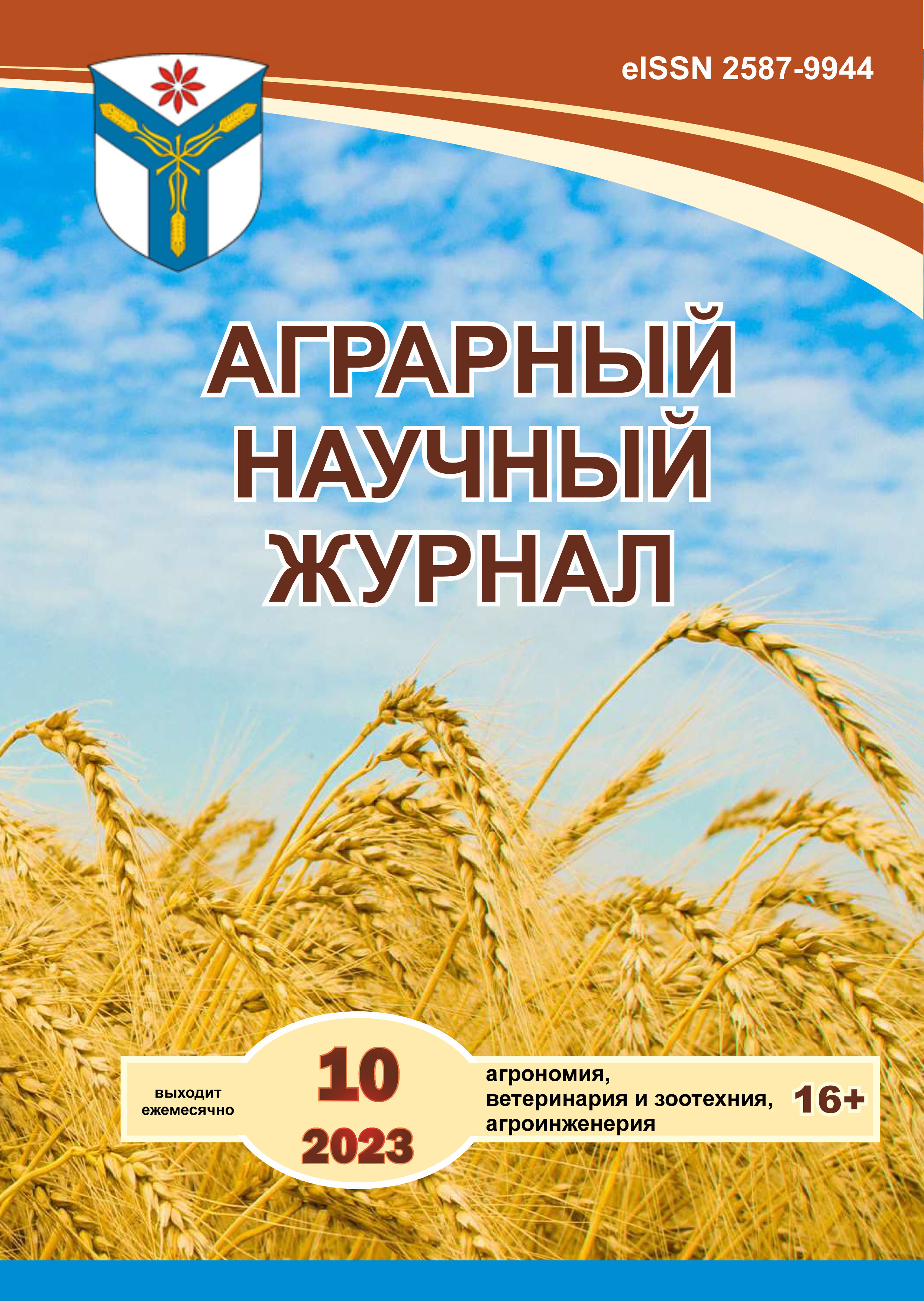Histological examination of biopsy material of animal bone tissue using osteoplastic biocomposite coating of implants accelerating consolidation
DOI:
https://doi.org/10.28983/asj.y2023i10pp87-93Keywords:
histology, osteon, Haversian canal, osteocyte, plates, fracture, consolidation, dogs, biocomposite material, osteosynthesisAbstract
In modern veterinary and humane medicine, the issue of optimizing reparative osteogenesis, aimed at accelerating consolidation, preventing bacterial infection, a stabilization method, as well as activating osteoinductive and osteoconductive properties, is quite acute. This can be achieved using osteoplastic biocomposite coatings on implants. The significant role of such components as hydroxyapatite, methyluracil, amoxicillin in metabolic processes aimed at regenerative, antibacterial and metabolic processes of osteogenesis has been determined. The group of authors set the goal of the study: to study, using a histological method, the quantitative and qualitative aspects of fusion of a fracture of the middle third of the diaphysis of long tubular bones (radius), in an experiment, using the developed biocomposite coating. The material for this study was histotopographic preparations of bone regenerates obtained on day 35 using a needle for trephine biopsy of bone tissue, after consolidation of the simulated fracture was established using implants with the developed osteoplastic coating. As a result of the study of histotopographic materials using 3.5% and 5% biocomposite coating to accelerate consolidation, in the experimental groups there is no amount of the developed composite, which indicates biocompatibility with complete biointegration without allergenic and cytostatic effects.Throughout the experiment, no significant difference was found between the experimental groups; in each group, restored microcirculation was visualized with many physiological Haversian canals with blood vessels, the nervous system and adequate tissue trophism. Histological examination of the formed bone regenerate is necessary to confirm the completed accelerated process of osteogenesis in small non-productive animals.
Downloads
References
Динамика тканевых изменений при одно- и двухэтапном лечении хронического остеомиелита с использованием биорезорбируемого материала, импрегнированного ванкомицином (сравнительное экспериментально-морфологическое исследование) / В. А. Конев [и др.] // Гены и клетки. 2021. № 1. С. 29–36.
Дисперсный биокомпозит на основе волластонита/гидроксиапатита: остеопластический потенциал с точки зрения рентгенологии / В. И. Апанасевич [и др.] // Тихоокеанский медицинский журнал. 2020. № 3. С. 88–89. DOI: 10.34215/1609 1175 2020-3-88-89.
Изосимова А. Э. Сравнительная количественная оценка репаративного процесса в костной и параоссальных тканях при имплантации спиц с покрытием нитридами титана и гафния в эксперименте // Ветеринарный врач. 2016. № 1. С. 22–28.
Ирьянов Ю. М., Силантьева Т. А. Современные представления о гистологических аспектах репаративной регенерации костной ткани (обзор литературы). Клеточные источники репаративного остеогенеза. Гетерогенность клеточной популяции в области травматического повреждения кости // Гений ортопедии. 2007. № 2. С. 111–116.
Конев В. А., Лабутин Д. В., Божкова С. А. Экспериментальное обоснование клинического применения стимуляторов остеогенеза в травматологии и ортопедии (обзор литературы) // Сибирское медицинское обозрение. 2021. № 4. С. 5–17. DOI:10.20333/250001.36-2021-4-5-17.
Морфологическая и рентгенологическая характеристика регенерации костной ткани в эксперименте / Э. А. Надыров [и др.] // Проблемы здоровья и экологии. 2021. № 18(3). С. 94–104. DOI: https://doi. org/10.51523/2708-6011.2021-18-3-12.
Морфологическая характеристика регенерации костной ткани при использовании трансплантационной костной аутосмеси // Э. А. Надыров [и др.] // Проблемы здоровья и экологии. 2019. № 4. С. 57–62.
Пахт А. В., Манизер Н. М. Особенности обработки костной ткани // Библиотека патологоанатома (науч.-практ. журнал). 2008. № 89. С. 6–11.
Смирнов А. В., Румянцев А. Ш. Строение и функции костной ткани в норме и при патологии // Нефрология. 2014. № 6. С. 9–25.
Смирнов А. В., Румянцев А. Ш. Строение и функции костной ткани в норме и при патологии. II/ А.В. Смирнов, А.Ш. Румянцев // Нефрология. 2015. №1. С. 8–17.
Сравнительный морфологический аспект изучения костей домашних и диких животных / И. В. Зирук [и др.] // Аграрная наука. 2022. № 5. С. 18–21.
De Margerie E. D., Robin J. P., Verrier D., Cubo J., Groscolas R., Castanet J. Assessing a relationship between bone microstructure and growth rate: a fluorescent labelling study in the king penguin chick (Aptenodytes patagonicus). Journal of Experimental Biology. 2004. No. 207. P. 869–879. DOI: https://doi.org/10.1242/jeb.00841.
Stout S. D., Crowder C. Bone remodeling, histomorphology, and histomorphometry. Bone Histology: An Anthropological Perspective, Boca Raton: CRC Press, 2011. P. 1–21. DOI: https://doi.org/10.1201/b11393.
Streeter M. Histological age-at-death estimation. Bone Histology: An Anthropological Perspective, Boca Raton: CRC Press, 2011. P. 135–152.
Downloads
Published
Issue
Section
License
Copyright (c) 2023 The Agrarian Scientific Journal

This work is licensed under a Creative Commons Attribution-NonCommercial-NoDerivatives 4.0 International License.








